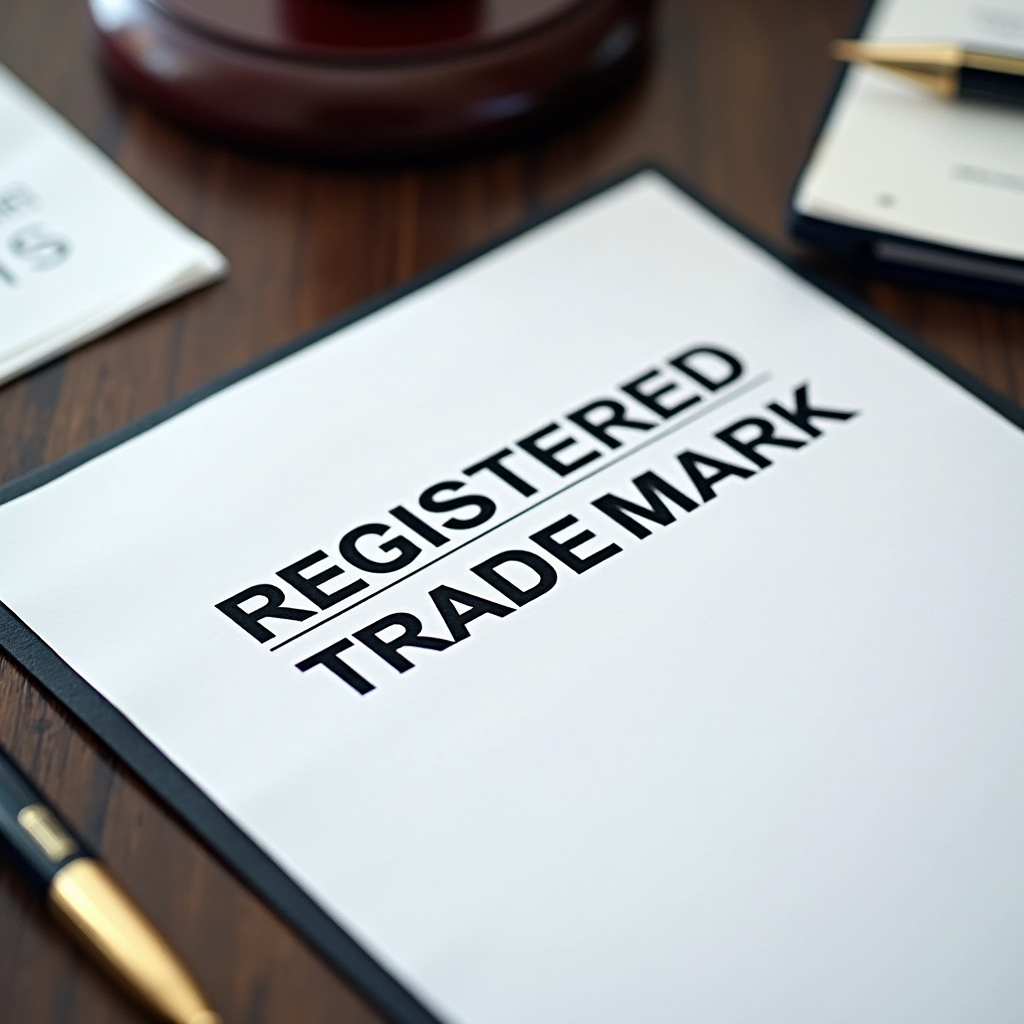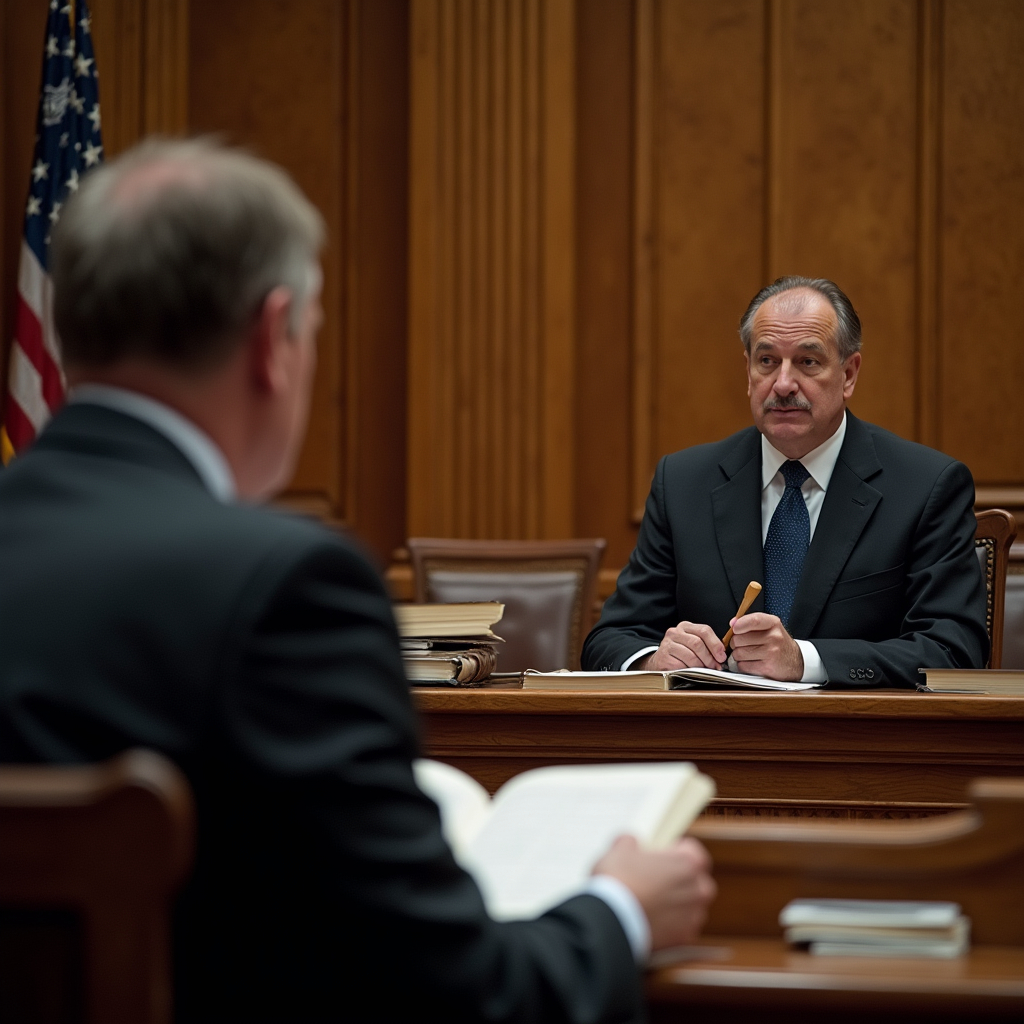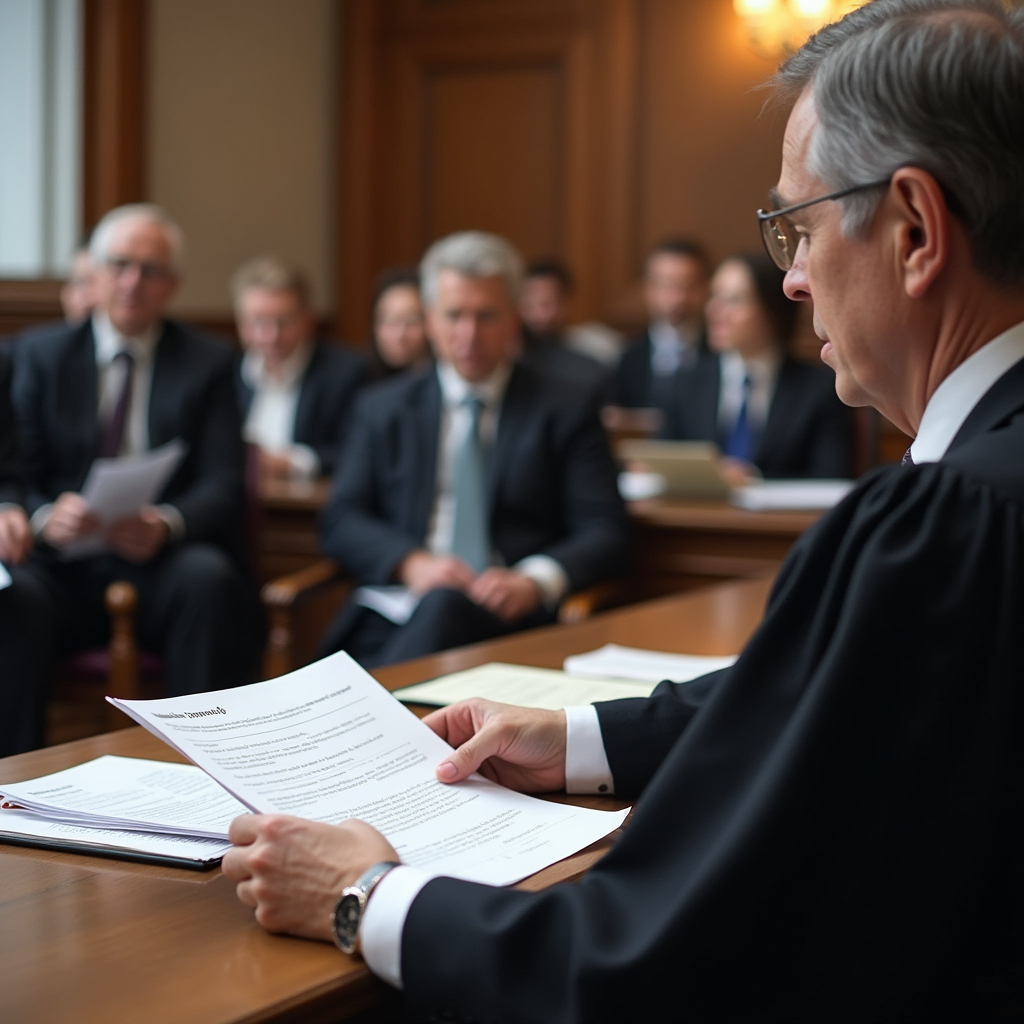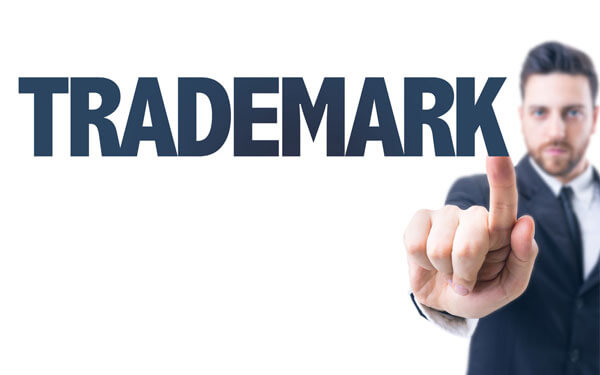This article is written by Shamim Shaikh. This article especially focuses on Section 134 of the Trade Marks Act 1999, discusses how cases of trade mark infringement should be handled, examines the jurisdictions of courts, and examines the practical implications of these provisions on trade mark issues. This article also includes the protections that are available to the involved parties in the cases under Section 134 of the Trade Marks Act, 1999.
Table of Contents
Introduction
In today’s fast-growing world, trade marks, which identify any brand, have become valuable assets, and this is statutorily protected by the Trade Marks Act, 1999, It falls under the Department of Industrial Policy and Promotion (DIPP) within the Ministry of Commerce and Industry. Trade mark law has evolved more significantly over the past centuries, and has a long history. It began with the introduction of the first trade mark law in 1889, before that, the Indian trade mark laws were governed by the common law, with the case often decided on the basis of Section 54 of the Specific Relief Act, 1977.
At the same time, it is important to note that the formal ownership was recognised by the declaration under the Registration Act, 1908. The Trade Marks Act, 1999 has evolved from earlier laws, like Trade & Merchandise Marks Act, 1958, which replaced the Trade Marks Act, 1940. The Trade Mark Law, 1999 aimed to modernise trade mark laws in India by providing comprehensive provisions for the registration, protection and enforcement of trade marks.
Legal framework
In India, the Trade Marks Act 1999, is a comprehensive legal piece that governs the registration, protection, and enforcement of the trade marks in India. This Statute outlines the procedure for obtaining trade mark rights, and a detailed process for trade mark registration, covering application procedures, examination, publication, and opposition. The statute defines trade mark infringement and remedies like injunctions, damage and accounts of profits for the aggrieved party.
Additionally, it establishes an Appellate Board for appeals against Registrar decisions and prescribes penalties for offences like falsification, false representation and other fraudulent activities. Overall, the Trade Marks Act of 1999, is like a set of rule books that helps businesses protect trademark owner’s rights on their symbol, unique name, or logos, which they use to stand out from others.
Section 2(zb) of the Trade Marks Act, 1999, defines a “trade mark” as a mark that gives a unique identity to a business or services and provides the legal protection to keep this mark distinct from others. A trade mark can be a name, sign, symbol, logo, or combination of these elements.
For example; an arrow from A to Z in the Amazon logo, the three stripes of Adidas, or “R” in the circle indicates registered trademarks etc.
Importance of trade mark
Having a trade mark can enhance the business’s commercial value by creating customer loyalty through a strong brand. It also can help to increase product sales and provide a greater market presence. Through trade mark registration businesses can protect their brand names from any misuse. Brand names like Amazon and Facebook have become familiar to customers and have established a strong presence in their minds. When businesses develop a unique identity then they can pursue their creative ideas with confidence. A strong brand attracts loyal customers which can help to increase our sales.
Detailed explanation Section 134 of Trade Marks Act, 1999
Section 134 of the Trade Marks Act 1999, is a very important provision of the Indian law that addresses the jurisdictional aspect for filing legal suits related to trade mark infringement and passing off. This provision outlines where and how cases related to trade mark infringement can be filed and which courts have the authority to handle these cases. This provision also confirms that the courts are managing these with the right expertise.
Trade mark cases can be pretty complicated because they involve rules about brand names and logos. The district courts are better equipped and have expert judges having a better understanding of these rules. Since trademark issues can impact businesses and their reputations, it becomes important to handle such cases with the right level of authority and knowledge. District courts are higher-level courts that can deal with these important issues properly. Section 134(1) of the Trade Marks Act 1999, is divided into three clauses, each addressing different aspects of trade mark-related suits.
Suit for infringement of trade mark

Section 134(a) for the infringement of a registered trade mark specifies that any suit for the infringement of a registered trade mark must be filed in a District Court and cannot be brought before any lower court.
Imagine that you have created a new brand called “Magic Shoes” and designed a unique logo. Someone else starts using something similar to the same brand name, such as “Magical Shoes” along with a similar logo that is capable of creating confusion among the consumers, this would be considered trade mark infringement. For such an infringement you can go to the District Court.
Thus, trade mark infringement is a violation or breaking of the rules that protect the owners from unauthorised use. These rules established clear boundaries that no one else can play with these Magic shoes without having the consent of the owner.
Section 29 of the Trade Marks Act 1999, addresses the infringement of registered trade marks by outlining several key scenarios where unauthorised use constitutes infringement. Key elements for infringement of a trade mark for which one can directly knock on the doors of the court are when the parties-
- Confuse the consumer with similar goods/services: According to Section 29(1), If someone uses a trade mark that closely looks exactly similar or identical to a registered trade mark without the owner’s permission. The use is for the same or similar products or services as that of the other part, then this is considered trade mark infringement.
For example: suppose a local shoe store starts selling shoes under the name “Adibas”, which closely resemble the famous brand “Adidas”. There is a slight difference between the spellings. Selling similar sports shoes would clearly confuse people because of the direct similarity in appearance, pronunciations and products.
- Creating confusion about the origin of the goods or services: As per Section 29(2), if a mark is used in a manner that looks the same as or similar to a registered trade mark in a way that could confuse consumers about the origin of the product/ services or make them think there is a connection to the registered brand.
For example: let’s say a small coffee shop opens under the name “Starbucks cafe” which could mislead people into believing it is associated with the well-known coffee chain “Starbucks”. Even though the spelling is slightly different, it could lead consumers to wrongly assume a connection between the two brands.
- Automatic assumption of confusion: Section 29(3) said that when someone uses a trade mark that is exactly the same as the registered one for identical goods/services, the law presumes there will be confusion, without the need for additional proof.
For example: If a local electronic store sells mobile phones under the brand name “Apple” with the same logo as the globally recognised Apple Inc., it automatically creates confusion. In this situation, Apple does not need to prove that customers are confused, as the law assumes it because of the direct copy.
- Unfair advantage of reputed trade marks: Section 29(4), deals with the situation where the trade mark is famous, and someone uses it in connection with different goods or services, exploiting its reputation to gain an unfair advantage or harm the trade mark’s distinctiveness.
For example: If a person opens a clothing store under the name of Coca-Cola Apparel”. Even though Coca-Cola is a beverage and not a clothing brand, using this famous name could mislead people or unfairly capitalise on the brand’s popularity, thus constituting infringement.
- Labelling, packaging or advertising: Section 29(6) covers instances where a trade mark is used without permission in product packaging, advertising, or sales materials. Unauthorised use in these contexts also amounts to infringement.
For example: A company selling perfumes uses a logo similar to “Chanel” on their bottles, packaging, and advertisements. Even though the perfumes are not produced by Chanel, the use of a similar logo to mislead customers violates trade mark rights.
- Spoken use: Section 29(9) clarifies that the infringement is not limited to visual representations; it can also occur through spoken words. Using a registered trade mark verbally without permission in advertisements or promotions is considered an infringement.
For example: If a radio ad for a local electronics store claims to sell “Sony” television without authorisation from the company, this verbal use of the trade mark “Sony” would also constitute infringement, even though it is not written down or visually represented.
When we look at the protection from the infringement of a trade mark in the Indian context, the Trade Marks Act of 1999, provides various ways to protect a trade mark. By understanding and using these methods, anyone can safeguard their brand names and logos. To make this easier to understand, this provision has divided these protections into two broad categories i.e., direct and indirect infringement.

Direct trade mark infringement
It happens when someone uses your registered trade mark without your authorization and it can lead to legal consequences. For it to be qualified as infringement, your trade mark must be officially registered, as the law only protects those trade marks that are registered. Infringement is not just about using the exact same trade mark, it can also occur if someone uses a mark that is so similar to yours that it could mislead or create confusion in people’s minds.
For example, if the consumer mistakenly believes that the infringing mark is associated with the owner’s brand, this potential confusion is enough to establish infringement, even if the actual confusion has not happened yet.
Furthermore, the unauthorised use of your trade mark must be related to goods and services that fall within the same category as those covered by your registered trade mark. This means that if someone has infringed the trade mark of the same product or services that are directly competing with or related to your own, it could be considered infringement. The law prevents others from benefiting from the reputation and goodwill that your trade mark has already built in their marketplace.
Indirect trade mark infringement
Indirect trade mark infringement is not explicitly mentioned in the Act but it is recognised under the common law principles. It holds liable not only the direct infringer but also those who induce or contribute to the infringement. There are two types of indirect trade mark infringement:
Contributory infringement
It is situational infringement. One is when a person knows about the infringement and the other is when a person intentionally helps that person to continue doing the infringement.
For example: Imagine Alex is selling pirated copies of popular movies at a local market. Sam runs a booth next to Alex’s and notices that Alex’s DVDs are illegal copies. Rather than reporting Alex or asking him to stop, Sam helps Alex by giving him a table to display his DVDs. In such a situation Sam will be equally liable for the infringement as he helped Alex.
Vicarious liability
Vicarious liability happens when a person can control the actions of someone who is breaking the law and receiving financial benefits from that illegal activity, and is aware of the wrongdoing while also contributing to it. This means they can be held responsible for the illegal actions of another person because they had the power to stop it but didn’t and they profited from it.
Vicarious Liability is indirectly mentioned under Section 114 of the Trade Marks Act 1999. It states that if a company commits an offence under the Act, every person responsible for the company shall be held liable, except those who acted in good faith without knowing about the infringement.
For example: Emily owns a popular ice cream shop. Christ, one of her employees, started using a famous candy brand’s logo on homemade ice cream cones, even though Emily knows the logo is trade marked and Christ doesn’t have permission to use it.
Since Emily benefits from the sale of the ice cream cone, controls Christ and knows about the trade mark infringement, she can be held responsible for the illegal use of the trade mark under vicarious liability
Relating to any right in a registered trade mark
Clause (b) is similar to clause (a) but this clause mainly focuses on the rights related to the registered trade mark. Trade mark rights like who owns the trade mark, and who is allowed to use it are dealt with here. Another important issue about how the trade mark can be used or shared. The clause (b) ensures that any important issues about the rights to a trade mark are taken to a District Court that can handle them well and make a fair decision.
Passing off
Clause (c) of Section 134 under the Trade Marks Act 1999 talks about passing off. Passing off arising out of the use by the defendant of any trade mark which is identical with or deceptively similar to the plaintiff’s trade mark, whether registered or unregistered. It shall be instituted in any court inferior to a district court having jurisdiction to try the suit.
This provision explains where you should file a case if someone pretends to be you by using a trade mark that is the same as or very similar to yours, this situation is called passing off. Passing off happens when someone uses a brand name, logo, or symbol that looks like yours to trick people into thinking their goods or services are from you. It is simply copying your style to fool customers. This clause ensures that when you are dealing with the cases of passing off you need to go to the district court that can handle such important and complex issues.

Who can file a suit under Section 134
The eligibility to file a lawsuit for trade mark infringement under the Trade Marks Act 1999, is primarily granted to two categories of individuals.
Registered proprietor
Imagine you have started a YouTube channel called “Epic Youtuber” and created a logo for the same. You have registered the logo as your trade mark, which means you are the registered proprietor or the owner of that logo.
Thus, the registered proprietor or owner is the person or an individual that officially owns a trade mark. This registration gives them the exclusive right to use the trade mark for their products or services.
Rights and responsibility of the registered proprietor
- Section 28(1) of the Trade Marks Act 1999, gives the exclusive rights to the owner. That means the registered trade mark can be used only by the owners and prevented from using it without permission. This protects their brand and avoids confusion in the mark.
- If someone uses the trade mark without permission, the registered proprietor or owner can file the lawsuit under Section 134(1) in the District Court or any Higher Court but not in a lower court than the District Court.
- Section 29 of the Trade Marks Act, 1999 outlines the various acts that constitute an infringement of a registered trade mark, and the registered owner can seek remedies against such acts.
- The registered owner can get legal remedies like stopping the unauthorised use (through an injunction), receiving damages for losses and even claiming profits made by the infringer under Section 135 of the Trade Marks Act 1999.
Registered users

The registered users are those individuals or entities who are given permission by the registered owners to use that trade mark under Section 49 of the Trade Marks Act 1999. This relationship is established through a formal agreement between registered proprietors and registered users, which outlines the terms and conditions under which the trade mark can be used.
Rights and responsibilities of registered users
- Section 28 of the Trade Marks Act 1999, gives the exclusive right to the registered users to have the rights to use the trade mark in accordance with the terms set out in their licensing agreement with the registered proprietor or owners. This includes the right to use the trade mark for specific goods or services as defined in the agreement.
- Section 53 of theTrade Marks Act 1999, grants the registered users the right to initiate legal proceedings against unauthorised use or infringement of the trade mark, similar to the registered proprietors and this provision allows them to protect their interest. This provision allows the firms to maintain the trade mark as long as the registered users and partners from the original firm remain involved.
However, this provision does not allow the person who is allowed to use the trade mark but is not officially registered as the user does not have the right to start the legal case if someone else uses the trade mark without permission.
- If the registered trade mark is infringed by using an identical mark for identical goods or services then the court under Section 29(3) shall presume it is likely to cause confusion.
Jurisdiction of suit for infringement
In civil law, knowing the right place to file a lawsuit is crucial. In India, the rules for filing lawsuits in trade mark cases have changed significantly over time, thus reflecting the evolving nature of intellectual property rights enforcement. The Trade Marks Act 1940, was the first law in India that allowed a person to take legal action if someone used their trade mark without permission.
Section 134 (2) of the Trade Marks Act, 1999, confirms the jurisdiction of the courts i.e,. where you can file a lawsuit if your trade mark has been infringed. This provision says that you do not have to file the case where the infringement happened, you can file it in the District Court in the area where you live, where you run the business or where you work. This rule is meant to make it easier for the trade mark owners to talk about the person filing the case, it includes both the registered owner of the trade mark or anyone else who is legally authorised to use it.

Section 134 also clarifies that the purpose of including the term ‘person’ in subsection (2) is to make the reader understand that the term person covers both the registered owners of the trade mark and the registered users. By including both, the law ensures that both can take legal action. If either of them believes their trade mark rights are being violated, they can take legal action. This way, the law covers all parties involved in a trade mark, making sure that everyone who has a stake in the trade mark can defend it.
With the introduction of the Trade and Merchandise Marks Act, 1958, the legal rules changed a little. Section 105 of this Act continued to require that lawsuits be filed in District Courts, but it also clarified that these courts must have the right to hear the case according to Section 20 of the Civil Procedure Code (CPC). This means that the jurisdiction of the District Court was determined by the CPC’s provision on where a lawsuit could be filed.
The current law governing the trade marks in India is the Trade Marks Act 1999. Section 134 of this Act exclusively deals with the jurisdiction of filing the suit. It specifies that trade mark infringement suits can only be filed in a district court and not in any lower court. Additionally, the suit can be filed in a district court within the local limits where the plaintiff resides, carries on business or personally works for gain. This is an additional option for filing suit beyond the requirements of Section 20 of the Civil Procedure Code, 1908.
Relationship between Section 20 of the Civil Procedure Code 1908 and Section 134 of the Trade Marks Act 1999
When it comes to determining the jurisdiction of filing a lawsuit in India, Section 20 of the Civil Procedure Code and Section 134 of the Trade Marks Act 1999 are closely connected. Both provisions lay down the basic guidelines for where you can file a civil lawsuit.
According to this section, anyone can file a lawsuit in a court that has local jurisdiction over:
- The place where the defendant (the person being sued) lives, works or does business
- The place where the cause of action (reason of the lawsuit) fully or partly took place.
However, Section 134(2) of the Trade Marks Act 1999, provides an additional option for the plaintiff to file the suit in the District Court or the High Court within whose local limits:
- The plaintiff actually and voluntarily resides or carries on business or personally works for gain.
- This is in addition to the option provided under Section 20 of the Civil Procedure Code, 1908.
Both the provisions of Section 20 of the Civil Procedure Code, 1908 and Section 134 of the Trade Marks Act 1999, guide where a lawsuit can be filed in India. Typically, it can file the suit in a court where the defendant lives, works, or where the issues happened. However, Section 134(2) of the Trade Marks Act offers an extra option, you can file the suit in a district court or high court where you, as the plaintiff, live, work, or do business. This gives more flexibility in choosing where to file their case.
Relevant case laws
Indian Performing Rights Society Ltd vs. Sanjay Dalia & Anr. (2015)
The Supreme Court in the case of Indian Performing Rights Society Ltd vs. Sanjay Dalia & Anr. (2015) pointed out that Section 134(2) was created to make it easier for plaintiffs to take action without being discouraged by long distance. This case dealt with the issue of jurisdiction concerning the filing of suits for copyright infringement and trade mark violation and specifically interpreting Section 62 of the Copyright Act, 1957 and Section 134(2) of the Trade Marks Act, 1999.
The lawsuit was filed by the Indian Performing Rights Society Ltd, (IPRS) in Delhi High Court against Sanjay Dalia, who is the owner of a cinema hall in Mumbai, accusing him of using music without obtaining the necessary licences. However, the defendant Sanjay Dalia argued that the case should be handled by Mumbai Court as Mumbai is the place where the cause of action took place.
Thus, both the Single Bench and the Division Bench of the Delhi High Court upheld the objection of Sanjay Dalia and ruled that the suit should have been filed in Mumbai, as that was where the primary business operations and cause of action were situated. Dissatisfied with this judgement, IPRS decided to appeal the ruling to the Supreme Court.

Judgement
The Supreme Court in this case emphasised the interpretation of Section 62 of the Copyright Act 1957, and Section 134 of the Trade Marks Act 1999. The court recognised that these provisions grant the ability to file the lawsuit in the jurisdiction where the plaintiff conducts their businesses or lives regardless of where the cause of action occurred. This interpretation was in alignment with the objective of making it easier for the plaintiff to seek justice, especially if pursuing cases in distant jurisdictions would be challenging.
The ruling of this case necessitates for the lower courts for the careful consideration of jurisdictional issues in trade mark and copyright infringement cases in the future. The court should strive to establish a clear and consistent framework that balances the plaintiff’s right to choose a forum with the defendant’s right to a fair trial. The case has significant implications for the jurisdictional framework governing trade mark and copyright infringement suits in India. While this judgement enhanced the plaintiffs’ access to justice, it also raised concerns about increased litigation and the need for clarity in judicial interpretations. Moving forward, a balanced approach would be essential in upholding the rights of both plaintiffs and defendants in the intellectual property arena.
The court identified four scenarios for jurisdiction based on the location of the plaintiff’s office and the cause of actions:
- Sole office: If the plaintiff operates from a single office, they may file a suit at that location, even if the cause of action occurred elsewhere.
- Principal and subordinate offices: When a plaintiff has both a principal office and a subordinate office and the cause of action arose at the principal office, the suit must be filed at the principal office, not the subordinate office.
- Principal Office and cause of action at subordinate Office: if a plaintiff’s principal office is in one location but the cause arose where the subordinate office is situated, the suit should be filed at the subordinate office’s location
- Cause of action at a Different Location: if the cause of action occurs at a place distinct from both the principal and subordinate offices, the suit must be filed where the cause of action took place.
Advance Magazine Publishers Inc vs. M/S Just Lifestyle Pvt Ltd, (2011)
In the case of Indian Performing Rights Society Ltd vs. Sanjay Dalia and Anr. (2015), the court referred to the earlier decision in Advance Magazine Publishers Inc and Anr. vs. M/S Just Lifestyle Pvt. Ltd. (2011). In this case, Vogue India filed a lawsuit for trade mark infringement.
It has a registered office in Mumbai where its magazines are processed and published and sued for trade mark infringement. It argued that having a branch office in Delhi allowed them to file lawsuits there under Section 134 of the Trade Marks Act 1999. To support this, they applied to amend their plaint under Order 6 Rule 17 of the CPC. Under this provision, Vogue India claimed that their magazine was sold and distributed to subscribers in Delhi, making the Delhi court the appropriate venue. However, the High Court denied this amendment application, ruling that merely having a branch office in Delhi was not sufficient for the jurisdiction; it needed to be shown that the act was the actual cause of actions that arose in Delhi.
Later, the Division Bench of the Court overturned the Single Bench’s decision and approved the amendment request. This ruling was then challenged in the Supreme Court through a Special Leave Petition. Mr. T.R. Andhiarujina, representing the appellant, argued that Section 62(2) of the Copyright Act and Section 134 of the Trade Marks Act grant special rights that take precedence over the Code of Civil Procedure, 1908 and other laws. According to him, Section 20 of the Code of Civil Procedure, 1908, mandates filing a case where the defendant resides or where the cause of action arose, does not apply here. Instead, Section 62(2) and Section 134 are concerned with where the plaintiff resides or conducts business, not where the cause of action arose.
Andhiarujina argued that the Delhi High Court had misinterpreted the relevant laws and that the convenience of the defendant should not dictate where a case is filed. He pointed out that the High Court had overlooked important precedents. To support his argument, he cited the case of Exphar Sa & Anr vs. Eupharma Laboratories Ltd & Anr (2004), where the Supreme Court ruled that the jurisdiction for filing a suit depends on where the cause of action arises and not merely where the plaintiff’s office is located. The Supreme Court emphasised that the convenience of the plaintiff alone cannot determine jurisdiction, and the place of infringement or the cause of actions should be the basis for filing a suit. This case established rules on where a lawsuit should be filed in 2004 itself but was not considered in the new ruling.
Judgement
In this Judgement of the court cited other important cases such as M/S Dhodha House vs. S.K. Maingi (2005) and Dabur India Ltd. vs. K.R. Industries (2008) along with some other Delhi High Court judgements like Intas Pharmaceuticals Limited vs. Allergan Inc. (2006), Smithkline Beecham plc and Another vs. Mr. Sunil Singhi And Another (2001), Caterpillar Inc. vs. Kailash Nichani And Ors (2002). With all these cited judgements, the plaintiff supported his argument that he has the right to file a lawsuit in the location where they conduct business, even if the cause of action did not happen there. These rulings collectively emphasised that as long as the plaintiff has a business presence in the chosen location, they can file the suit there, without the need for the infringement or legal issue to have taken place in that specific area. This legal principle gives plaintiffs flexibility in choosing a convenient court for their cases.
Burger King Corporation vs. Swapnil Patil & Ors. (2023)
This case, widely known as the Burger King Corporation case, involved Burger King taking legal action against multiple defendants for allegedly infringing on the company’s trade mark by operating fraudulent websites and faking people into applying for fake Burger King franchises, causing financial damage to both the companies and its customers.
The Delhi High Court had earlier granted an injunction against several illegal domain names used by the defendants. However, the defendants continued their operation by creating two new mirror websites: www.burgerkingfoodindia.com and www.burger king franchise india.co.in. These websites offered fake franchises and collected money in a similar manner along with the specific bank account details.
Judgement
The court acknowledged that the problem of online infringement is constantly evolving, with fraudulent websites often reappearing in different forms after being taken down. This situation calls for a flexible and proactive legal strategy.
To address this issue, the court issued a “Dynamic Plus Injunction”, which allows the plaintiffs to protect both their existing trade mark and future creation without needing to return to court every time a new fake website appears. This move simplifies the enforcement process and prevents further piracy.
The court also directed the Ministry of Electronic and Information Technology (MEITY) and Internet Services Providers (ISPs) to take immediate action by blocking the fraudulent websites. Additionally, they are required to monitor and swiftly address any future infringing websites. In a crucial step, the court directed Canara Bank to freeze the bank account linked to the fraudulent activities. This step is essential to prevent further financial damage to the consumers and to halt the operations of the defendants.
Finally, the court allowed Burger King to file affidavits against any new infringement websites that might emerge, thereby providing ongoing protection for their trade mark and reducing the risk of further fraudulent activities in the future.
By allowing Burger King to file affidavits against new infringement websites as they appear, the court ensured ongoing trade mark protection, significantly reducing the risk of future fraudulent activities. This reflects the need for proactive legal strategies under Section 134 of the Trade Marks Act, 1999, which focuses on flexible jurisdiction to address trade mark infringement. The Delhi High Court ruled that either Section 20 of the Civil Procedure Code 1908, or Section 134 could be invoked to determine jurisdiction in trademark cases. The Court emphasised that these provisions complement each other rather than exclude one another.
Ultra Home Construction Pvt. Ltd. vs. Purushottam Kumar Chaubey & Ors. (2016)
This case was filed before the Delhi High Court, which was challenging the decision of the Single Bench judge of the Delhi High Court. The single bench judge dismissed the plaintiff’s suit on the grounds of lack of territorial jurisdiction.
In the case of Ultra Home Construction Pvt. Ltd. vs. Purushottam Kumar Chaubey & Ors. (2016), the ultra home construction (plaintiff) filed a lawsuit against Purushttam Kumar for the infringement of their trade mark “AMARPALI”. Ultra Home Construction Pvt Ltd. is engaged in the real estate sector and operates various businesses such as residential and commercial property developments and a hotel in Deoghar, Jharkhand under the name of Amrapali Clark-Inn.
The dispute arises when the defendant Purishottam Kumar launched a residential project in Deoghar called “AMBAPALI GREEN” which the plaintiff argues is deceptively similar to their trade mark “AMRAPALI GREEN”. Ultra Home Construction claims that this similarity could confuse the public and damage their business and trade mark reputation.

Judgement
Single Bench Judge stance
The single Bench Judge of the Delhi High Court dismissed the case at a very early stage and ruled that the court did not have territorial jurisdiction. This decision was influenced by the Supreme Court’s precedent in the case of Indian Performing Rights Society Ltd. vs Sanjay Dalia, which emphasised that the jurisdiction should be based on where the cause of action arose or where the defendant operates, not just where the plaintiff’s office is located.
The judge observed that the alleged infringement occurred in Deoghar, Jharkhand, where the plaintiff also runs a hotel, suggesting that the plaintiff was doing business there. Therefore, the judge concluded that the case should be filed in Deogarh rather than Delhi. Thus the plaintiff argued that the judge misunderstood the Supreme Court’s ruling and that the case should have been transferred to the appropriate court instead of being dismissed outright.
Division Bench of Delhi High Court Judgement
The Division Bench in this case applied the Jurisdictional Guidelines mentioned in the Indian Performing Rights Society Ltd vs. Sanjay Dalia and Anr. (2015). The plaintiff has its principal office in Delhi and a subordinate office in Deogarh, where the cause of action arose. Thus, the court concluded that the plaintiff could only sue in Deogarh and not Delhi.
The court also clarified that Sanjay Dalia’s case did not conflict with Dhodha House. These two cases rather offered a more refined interpretation of jurisdictional principles. The court in the Sanjay Dalia case acknowledged the observation made in Dhodha House and refined the application of jurisdictional rule to ensure consistency without negating the earlier decision. It confirmed that the specific guidelines provided in Sanjay Dalia were in harmony with the principles established in Dhodha House.
In this judgement, the court clarified how Section 134 governs jurisdictional questions in trade mark infringement cases, emphasising a balanced approach that considers both plaintiffs right and defendants convenience. It serves as a precedent for future cases regarding territorial jurisdiction under trade mark law in India.
Conclusion
Section 134 of the Trade Mark Act 1999, clarifies that, when the registered trade mark is infringed, meaning someone uses your trade mark or a similar one without permission, the law clearly states that any legal action or lawsuit against such infringement cannot be filed in just any court. It must be brought before a district court or a higher court with the authority to handle such cases. Section 134 of the Trade Marks Act 1999, is very crucial in enforcing trade mark rights in India by providing a clear framework for filing suits related to trade mark infringement. This ensures that cases are heard in courts with the proper jurisdiction and expertise.
The interpretation of the legal provisions should aim at preventing misuse and ensuring fairness. If the court accepts the interpretation of filing a suit based on the jurisdiction of where the cause of action took place, it could result in several issues. For example, in the case of Indian Performing Rights Society Ltd. (IPRS), the plaintiff was seeking the right to file their lawsuit in Delhi, where they conduct business, even though the alleged infringement occurred in Maharashtra. This interpretation would mean that plaintiffs could compel defendants to appear in courts located far from where the plaintiff resides or conduct business. Such a scenario could lead to undue harassment of defendants by forcing them to travel long distances for legal proceedings. Therefore, it is crucial to interpret laws in such a way that prevents such misuse and ensures fairness.
Enforcing trade mark rights not only protects the interests of individual owners and users but also contributes to a fair and competitive marketplace, fostering innovation and consumer trust. As trade mark laws continue to evolve, it is essential for courts to clarify the rules and make judicial interpretations that address emerging challenges, ensuring strong protections for trade marks in India.
Frequently Asked Questions (FAQs)
What is the difference between a registered proprietor and a registered user?
Both registered proprietors and registered users have the rights under the Trade Marks Act 1999, the registered proprietors hold the exclusive ownership and broader legal authority over the trade mark. On the other hand, the registered users have rights that are based on the conditions of the agreement. This agreement between the owner and the user limits the control and scope of use.
Are there any exceptions to the court hierarchy for suits under Section 134?
Trade mark suits usually have to be filed in District Court, but Section 134(2) of the Trade Marks Act gives an exception. This allows plaintiffs to file the suit in a District Court where they live or do business instead of only where the defendant lives or where the issues happened, as stated in Section 20 of the CPC. This provision is more flexible for plaintiffs.
What are the consequences if the infringement suits are filed incorrectly?
Filing a lawsuit in the wrong court can lead to dismissal for lack of jurisdiction, causing delays, extra cost, and potentially impacting the plaintiff’s ability to quickly address the issues.
What do you mean by the mischief rule?
Mischief rule is a principle of statutory interpretation used by courts to determine the meaning of a law based on its purpose and the problem it was intended to address.
References
- https://www.barandbench.com/news/jurisdiction-trade mark-infringement-cpc-tm-act-delhi-hc
- https://www.livelaw.in/columns/territorial-jurisdiction-under-trade mark-and-copyright-law-in-india-161738
Students of Lawsikho courses regularly produce writing assignments and work on practical exercises as a part of their coursework and develop themselves in real-life practical skills.
LawSikho has created a telegram group for exchanging legal knowledge, referrals, and various opportunities. You can click on this link and join:
Follow us on Instagram and subscribe to our YouTube channel for more amazing legal content.
 Serato DJ Crack 2025Serato DJ PRO Crack
Serato DJ Crack 2025Serato DJ PRO Crack










 Allow notifications
Allow notifications



